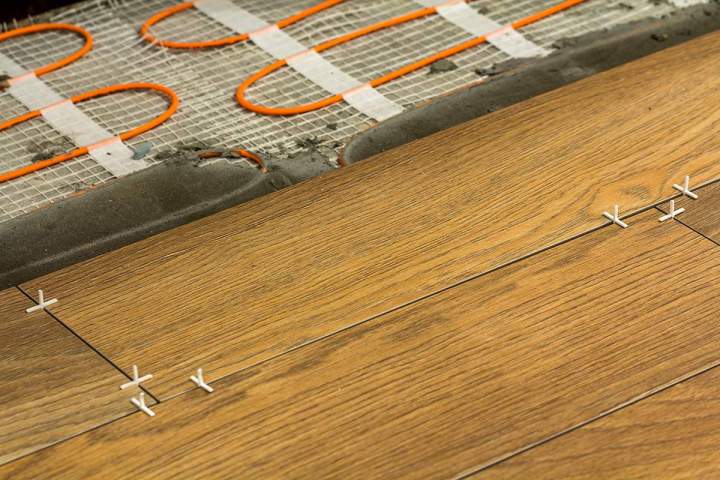What is the difference between a floating floor and engineered wood flooring?
Floor Microclimat / August 14, 2025
At first glance, floating floors and engineered wood floors may seem very similar. However, their composition, installation method, and durability differ significantly. In this article, we explain the main differences between these two types of flooring to help you choose the one that best suits your needs, budget, and style.

1. Floating floor:
Features:
- A floating floor is not fixed to the ground with nails or glue. It simply rests on an underlay (often made of foam or cork) and is assembled using a click or interlocking system. It is therefore “floating” because it does not touch the floor directly.
- It can be made of composite wood, laminate, vinyl, or other materials, making it versatile.
Advantages:
- Quick and easy installation without the need for glue or nails.
- More affordable than solid wood or engineered wood.
- Suitable for uneven floors or quick repairs.
- Can be installed over underfloor heating, provided the right materials are chosen.
- Less maintenance and more resistant to scratches and stains than traditional wood.
Disadvantages:
- Less durable than solid wood, as it can deteriorate more quickly over time.
- The joints between the boards can deteriorate with humidity or temperature changes.
- Less authentic in appearance if you are looking for a genuine natural wood look.
2. Engineered wood flooring (or engineered wood):
Features:
- Engineered wood flooring consists of several layers of wood. The top layer is solid wood (such as oak or walnut), while the lower layers are often made of plywood or fiberboard.
- It can be glued or nailed to the floor, or sometimes laid as a floating floor, depending on the product specifications.
Advantages:
- More durable and resistant than composite or laminate floating wood flooring. It combines the aesthetics of solid wood with the stability of other materials.
- Less prone to warping than solid wood, as the layers are crossed, which helps reduce the effects of humidity and temperature.
- Authentic in appearance and feel, with a real wood layer on top.
- Suitable for heated floors (especially for low-temperature systems, such as underfloor heating).
Disadvantages:
- More expensive than traditional floating floors, as it uses solid wood for the top layer.
- More complex installation if you choose to glue or nail it, although some floating models are also available.
- Although durable, it can still deteriorate over time, especially if scratched or damaged significantly.
In summary:
| Criterion | Floating Floor | Engineered Wood Flooring |
|---|---|---|
| Construction | Several materials (wood, laminate, vinyl) with click system. | Multiple layers, including a layer of solid wood. |
| Installation | Easy and quick, no nails or glue required, floating installation. | More complex, often requires glue or nails. |
| Sustainability | Less durable, may deteriorate more quickly. | Very durable, but with a higher price tag. |
| Appearance | Less natural than solid wood. | More authentic appearance with a real wood layer. |
| Cost | Cheaper | More expensive, due to the solid wood and complex construction. |
| Suitable for underfloor heating | Can work if the right material is chosen. | Highly suitable for underfloor heating systems. |
Conclusion :
- Floating floor: If you're looking for quick installation, an affordable price, and don't need solid wood or long-lasting durability, this is a good choice. Ideal for renovations or temporary projects.
- Engineered wood flooring: If you want a more durable and authentic finish while still benefiting from the stability of wood, this is a better long-term choice, especially if you're willing to invest a little more.